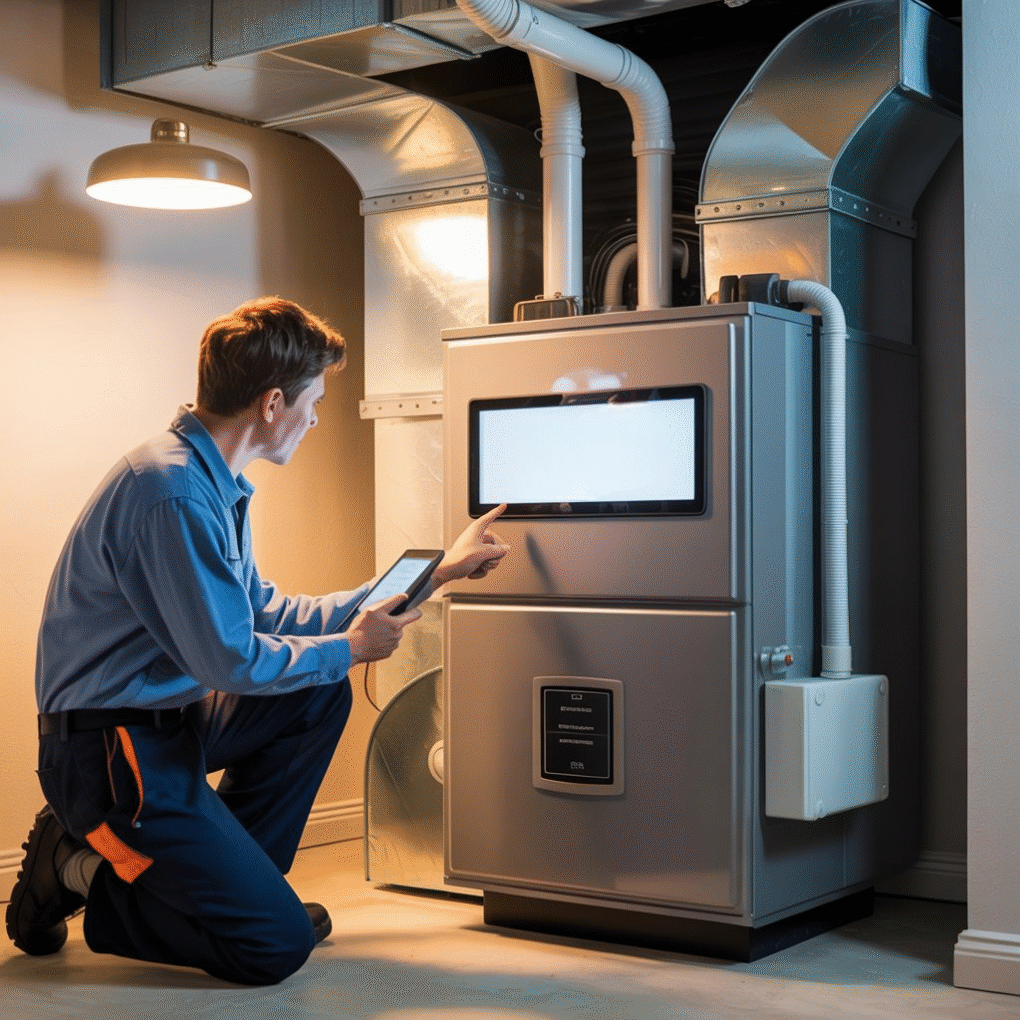When the temperatures drop, your home’s comfort depends heavily on one thing — a reliable furnace. But like any piece of equipment, furnaces don’t last forever. Over time, they become less efficient, more prone to breakdowns, and increasingly expensive to maintain. If you’ve found yourself calling for frequent repairs, you may be wondering whether it’s smarter to keep fixing your furnace or invest in a complete furnace replacement.
Understanding when to repair versus replace your furnace can help you make a cost-effective and energy-efficient decision. Let’s explore the signs that point toward each option — and how to know when it’s time to make the switch.

When a Furnace Repair Might Be Enough
Not every issue calls for a full replacement. In many cases, a simple repair can restore your furnace’s performance and extend its lifespan. Consider opting for repairs if:
1. The furnace is under 10 years old
Most modern furnaces are designed to last between 15 and 20 years with proper maintenance. If yours is still relatively young and has been well cared for, a repair can often get it running efficiently again.
2. Repairs are minor and inexpensive
Issues like a faulty thermostat, dirty filters, or a malfunctioning ignitor can often be fixed quickly and affordably. These problems don’t usually signal deeper mechanical failures.
3. Energy bills haven’t drastically increased
A sudden spike in energy usage can indicate your furnace is losing efficiency. If your bills remain steady, your system might just need a tune-up rather than replacement.
When Furnace Replacement Is the Smarter Choice
While repairs are sometimes enough, there comes a point when replacing your furnace is the more practical long-term solution. Here are the key indicators that it’s time for a furnace replacement:
1. Your furnace is more than 15 years old
Once a furnace reaches the 15–20 year mark, its performance tends to decline rapidly. Components wear out, and efficiency drops even with regular maintenance. Upgrading to a modern, energy-efficient unit can reduce your heating costs and improve comfort.
2. Repairs are becoming frequent or costly
If you’ve had to schedule multiple repairs in recent years—or if one repair costs more than half the price of a new system—it’s usually more economical to replace it.
3. Your heating bills are rising year after year.
Older furnaces lose efficiency over time, even when they appear to be working fine. If your energy costs keep climbing despite routine service, a furnace replacement can pay for itself through lower monthly bills.
4. Uneven heating or frequent cycling
If some rooms feel too cold while others are too hot, or if your furnace constantly turns on and off, it may be struggling to distribute heat properly. These are signs of a system nearing the end of its lifespan.
5. Unusual noises or odors
Rattling, banging, or squealing noises can signal failing components. Persistent burning smells or other unusual odors can indicate more serious issues that may justify replacing the unit altogether.
The Benefits of a Furnace Replacement
While a new furnace requires an upfront investment, the benefits often outweigh the initial cost. Modern systems are built with advanced energy-efficient technology, which means:
- Lower monthly energy bills thanks to higher AFUE (Annual Fuel Utilization Efficiency) ratings.
- Improved indoor comfort with more consistent heat distribution and quieter operation.
- Fewer repairs and longer warranties, giving you peace of mind for years to come.
- Better air quality with improved filtration and humidity control features.
Replacing your old furnace also adds value to your home and helps reduce your carbon footprint — a win for both your comfort and the environment.
Making the Right Decision
Ultimately, the decision between furnace repair and furnace replacement depends on your system’s age, performance, and repair history. A professional HVAC technician can perform a detailed inspection, assess your furnace’s condition, and help you weigh the pros and cons based on your home’s needs and budget.
If your current system is struggling to keep your home warm, it might be time to look beyond short-term fixes and invest in long-term comfort and efficiency through a furnace replacement. The right choice today can ensure reliable warmth and lower energy costs for many winters to come.
